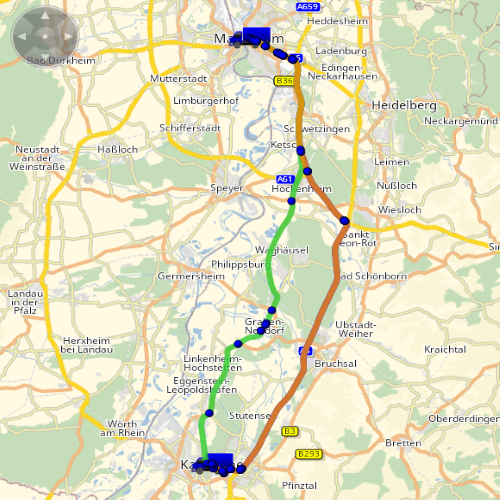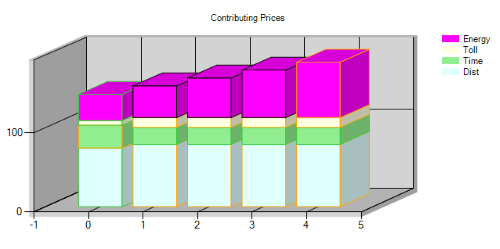The recent conflict in Ukraine has a huge impact on transport logistics companies. One effect of the crisis is the significant increase in fuel prices. As many logistics companies struggle to adjust to this new reality, some route planning software offer a clear way to reduce fuel costs.
A challenge for logistics companies
First, let’s look at the situation in Germany, Europe’s biggest economy and the continent’s land transport hub. Before the conflict started in late February, the price of liter of diesel was round about 1.50€ at a German fuel station. In the last two weeks, it has increased to way more than 2.20€. Nobody knows what will happen to the prices next.
Of course, transport logistics companies must reflect this change in the way they run their business. Even when fuel prices are lower, it is important to route your vehicles on the cost-optimal path. And when the fuel price is as high as in these days, it becomes crucial.
Enter smart simulation tools that are now common in the logistics industry. Some of them, like PTV Developer, allow transport planners to consider the changes in fuel prices and adjust their operations in a cost-effective manner.
Reducing fuel costs with route planning software
In the past few weeks, we performed some tests with an approach we developed in 2019. This approach enables dispatchers to consider several contributing factors, in order to determine the cheapest route for their fleet:
- The price of the required fuel, derived from consumption at various speeds and considering the price per unit
- Road tolls – in Germany this applies to highways and federal roads
- The static price per kilometer, reflecting consumption items such as oil, tires, etc.
- The drivers’ working hours
It is important to know, that many existing route planning software do not calculate the toll of a route at all – but PTV software have been doing so for many years. One must also remember, that even if a software is capable of calculating toll, it is usually done in a post process. This does not guarantee the cheapest route if a price-relevant factor is considered AFTER the path has been determined.
In addition, PTV Group’s route planning software consider toll price at runtime while we determine the geometry. Long story short: we determine the one and only route that minimizes the overall costs being aware of all these 4 factors.
Different prices, different routes

Now let’s get back to the rising fuel prices. In our simulation, we applied different fuel prices to a route between the cities of Karlsruhe and Mannheim in south-west Germany – a major artery of freight transport.
We started by simulating a fuel price of 1.50€ per liter. The software indicated that the most cost-effective route for trucks in this case is the one represented in green on the map.
In this pre-conflict price level, the cheapest route is via a federal road in the west. The total price for this route is calculated to be 142€, with energy (fuel) costs contributing 21%, or 32€.
However, when the price of diesel is 2.00€ per liter, the geometry calculated by the software already changes: the cheapest path is now an eastern alternative via highway A5, which is the brown route in the map. Though the distance costs increase the consumption of the energy contribution is now handled in a more optimal way which even overrules the toll costs in this case.
In this scenario, the total price for this route is 152€, an increase of roughly 10%. The energy costs jump to 26% of the total price.
We stopped our simulations at an extreme scenario of a fuel price of 3.50€ per liter. The total price of the route then touches 182€, with an energy contribution of 40%. Even with higher prices the route stays on that path – just the relative energy contribution grows more and more.
How logistics companies can reduce fuel costs
The rising energy prices require logistics companies to re-adjust their operations in order to reduce costs. We already know that route planning software helps companies optimize their operations.
The small experiment we performed at PTV Group showed that a good route planning software is useful to save fuel costs, when it is able to recommend different routing according to fuel price levels.
For logistics companies considering purchasing a route planning software, we therefore recommend checking with the supplier, that the software includes a function to simulate diverse energy prices.

